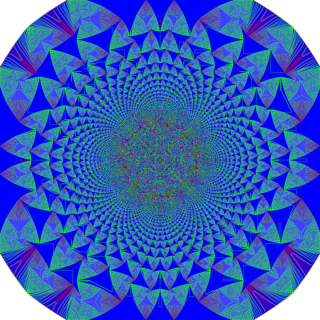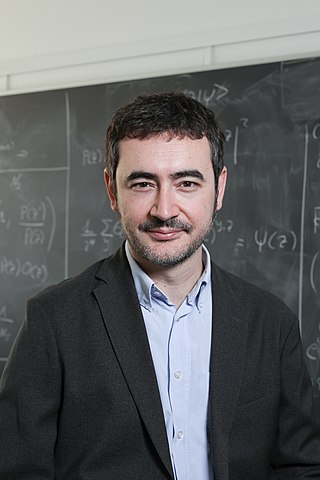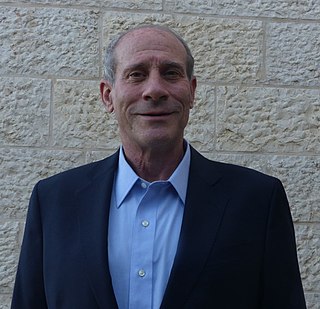Related Research Articles

Social dynamics is the study of the behavior of groups that results from the interactions of individual group members as well to the study of the relationship between individual interactions and group level behaviors.
A complex system is a system composed of many components which may interact with each other. Examples of complex systems are Earth's global climate, organisms, the human brain, infrastructure such as power grid, transportation or communication systems, complex software and electronic systems, social and economic organizations, an ecosystem, a living cell, and ultimately the entire universe.

Biophysics is an interdisciplinary science that applies approaches and methods traditionally used in physics to study biological phenomena. Biophysics covers all scales of biological organization, from molecular to organismic and populations. Biophysical research shares significant overlap with biochemistry, molecular biology, physical chemistry, physiology, nanotechnology, bioengineering, computational biology, biomechanics, developmental biology and systems biology.
Computational neuroscience is a branch of neuroscience which employs mathematical models, computer simulations, theoretical analysis and abstractions of the brain to understand the principles that govern the development, structure, physiology and cognitive abilities of the nervous system.

Self-organized criticality (SOC) is a property of dynamical systems that have a critical point as an attractor. Their macroscopic behavior thus displays the spatial or temporal scale-invariance characteristic of the critical point of a phase transition, but without the need to tune control parameters to a precise value, because the system, effectively, tunes itself as it evolves towards criticality.

Christof Koch is a German-American neurophysiologist and computational neuroscientist best known for his work on the neural basis of consciousness. He is the president and chief scientist of the Allen Institute for Brain Science in Seattle. From 1986 until 2013, he was a professor at the California Institute of Technology.

In the context of network theory, a complex network is a graph (network) with non-trivial topological features—features that do not occur in simple networks such as lattices or random graphs but often occur in networks representing real systems. The study of complex networks is a young and active area of scientific research inspired largely by empirical findings of real-world networks such as computer networks, biological networks, technological networks, brain networks, climate networks and social networks.

A neural network can refer to either a neural circuit of biological neurons, or a network of artificial neurons or nodes in the case of an artificial neural network. Artificial neural networks are used for solving artificial intelligence (AI) problems; they model connections of biological neurons as weights between nodes. A positive weight reflects an excitatory connection, while negative values mean inhibitory connections. All inputs are modified by a weight and summed. This activity is referred to as a linear combination. Finally, an activation function controls the amplitude of the output. For example, an acceptable range of output is usually between 0 and 1, or it could be −1 and 1.

Neural oscillations, or brainwaves, are rhythmic or repetitive patterns of neural activity in the central nervous system. Neural tissue can generate oscillatory activity in many ways, driven either by mechanisms within individual neurons or by interactions between neurons. In individual neurons, oscillations can appear either as oscillations in membrane potential or as rhythmic patterns of action potentials, which then produce oscillatory activation of post-synaptic neurons. At the level of neural ensembles, synchronized activity of large numbers of neurons can give rise to macroscopic oscillations, which can be observed in an electroencephalogram. Oscillatory activity in groups of neurons generally arises from feedback connections between the neurons that result in the synchronization of their firing patterns. The interaction between neurons can give rise to oscillations at a different frequency than the firing frequency of individual neurons. A well-known example of macroscopic neural oscillations is alpha activity.
Reservoir computing is a framework for computation derived from recurrent neural network theory that maps input signals into higher dimensional computational spaces through the dynamics of a fixed, non-linear system called a reservoir. After the input signal is fed into the reservoir, which is treated as a "black box," a simple readout mechanism is trained to read the state of the reservoir and map it to the desired output. The first key benefit of this framework is that training is performed only at the readout stage, as the reservoir dynamics are fixed. The second is that the computational power of naturally available systems, both classical and quantum mechanical, can be used to reduce the effective computational cost.

Eve Marder is a University Professor and the Victor and Gwendolyn Beinfield Professor of Neuroscience at Brandeis University. At Brandeis, Marder is also a member of the Volen National Center for Complex Systems. Dr. Marder is known for her pioneering work on small neuronal networks which her team has interrogated via a combination of complementary experimental and theoretical techniques.
Theo Geisel is a German physicist. Geisel is a director at the Max Planck Institute for Dynamics and Self-Organization and professor of theoretical physics at the University of Göttingen. His research is primarily concerned with the behavior of complex systems ranging from theoretical investigations in quantum chaos to nonlinear phenomena occurring in the brain.
Human dynamics refer to a branch of complex systems research in statistical physics such as the movement of crowds and queues and other systems of complex human interactions including statistical modelling of human networks, including interactions over communications networks.

Quantum simulators permit the study of a quantum system in a programmable fashion. In this instance, simulators are special purpose devices designed to provide insight about specific physics problems. Quantum simulators may be contrasted with generally programmable "digital" quantum computers, which would be capable of solving a wider class of quantum problems.

Baruch Barzel is an Israeli physicist and applied mathematician at Bar-Ilan University, a member of the Gonda Multidisciplinary Brain Research Center and of the Bar-Ilan Data Science Institute. His main research areas are statistical physics, complex systems, nonlinear dynamics and network science.
In neuroscience, the critical brain hypothesis states that certain biological neuronal networks work near phase transitions. Experimental recordings from large groups of neurons have shown bursts of activity, so-called neuronal avalanches, with sizes that follow a power law distribution. These results, and subsequent replication on a number of settings, led to the hypothesis that the collective dynamics of large neuronal networks in the brain operates close to the critical point of a phase transition. According to this hypothesis, the activity of the brain would be continuously transitioning between two phases, one in which activity will rapidly reduce and die, and another where activity will build up and amplify over time. In criticality, the brain capacity for information processing is enhanced, so subcritical, critical and slightly supercritical branching process of thoughts could describe how human and animal minds function.
Applying classical methods of machine learning to the study of quantum systems is the focus of an emergent area of physics research. A basic example of this is quantum state tomography, where a quantum state is learned from measurement. Other examples include learning Hamiltonians, learning quantum phase transitions, and automatically generating new quantum experiments. Classical machine learning is effective at processing large amounts of experimental or calculated data in order to characterize an unknown quantum system, making its application useful in contexts including quantum information theory, quantum technologies development, and computational materials design. In this context, it can be used for example as a tool to interpolate pre-calculated interatomic potentials or directly solving the Schrödinger equation with a variational method.

Wulfram Gerstner is a German and Swiss computational neuroscientist. His research focuses on neural spiking patterns in neural networks, and their connection to learning, spatial representation and navigation. Since 2006 Gerstner has been a full professor of Computer Science and Life Sciences at École Polytechnique Fédérale de Lausanne (EPFL), where he also serves as a Director of the Laboratory of Computational Neuroscience.

Giuseppe Carleo is an Italian physicist. He is a professor of computational physics at EPFL and the head of the Laboratory of Computational Quantum Science.

Jay Fineberg is an Israeli physicist. He is a professor at the Racah Institute of Physics of the Hebrew University of Jerusalem. He is known for his work on various aspects of nonlinear physics, mainly in the fields of fracture and friction. He is an elected fellow of the American Physical Society and the Israel Physical Society.
References
- ↑ Majdandzic, A.; et al. (2014). "Spontaneous recovery in dynamical networks". Nature Physics. 10 (1): 34–38. Bibcode:2014NatPh..10...34M. doi: 10.1038/nphys2819 .
- ↑ Jan Nagler; Anna Levina; Marc Timme (2011). "Impact of Single Links in Competitive Percolation". Nature Physics. 7 (3): 265–270. arXiv: 1103.0922 . Bibcode:2011NatPh...7..265N. doi:10.1038/nphys1860. S2CID 2809783.
- ↑ John J. Hopfield (1982). "Neural networks and physical systems with emergent collective computational abilities". Proceedings of the National Academy of Sciences of the USA. 79 (8): 2554–2558. Bibcode:1982PNAS...79.2554H. doi: 10.1073/pnas.79.8.2554 . PMC 346238 . PMID 6953413.
- ↑ Jianxi Gao; Baruch Barzel; Albert-László Barabási (2016). "Universal resilience patterns in complex networks". Nature. 530 (7590): 307–312. Bibcode:2016Natur.530..307G. doi:10.1038/nature16948. PMID 26887493. S2CID 4409052.